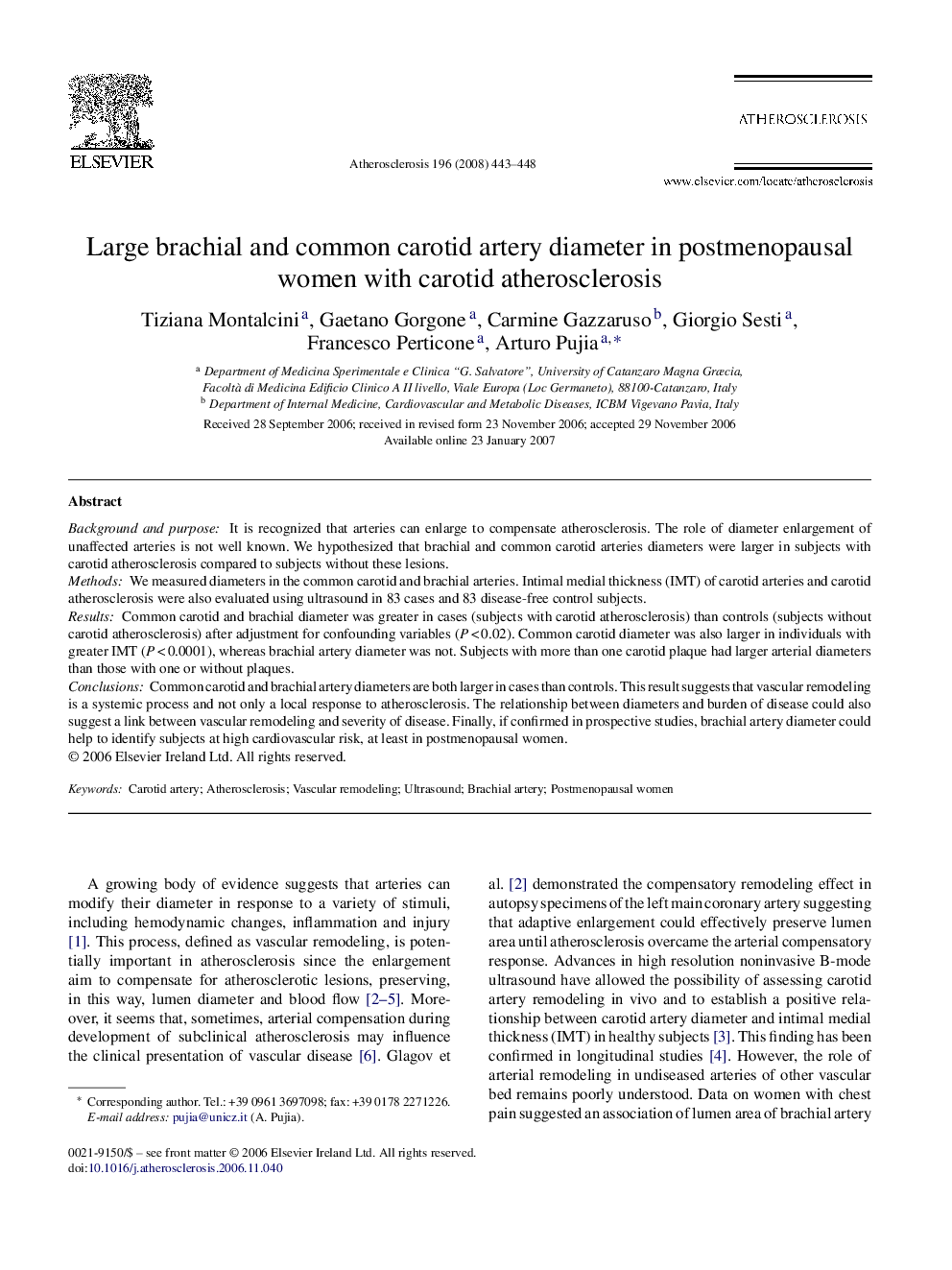| Article ID | Journal | Published Year | Pages | File Type |
|---|---|---|---|---|
| 2894543 | Atherosclerosis | 2008 | 6 Pages |
Background and purposeIt is recognized that arteries can enlarge to compensate atherosclerosis. The role of diameter enlargement of unaffected arteries is not well known. We hypothesized that brachial and common carotid arteries diameters were larger in subjects with carotid atherosclerosis compared to subjects without these lesions.MethodsWe measured diameters in the common carotid and brachial arteries. Intimal medial thickness (IMT) of carotid arteries and carotid atherosclerosis were also evaluated using ultrasound in 83 cases and 83 disease-free control subjects.ResultsCommon carotid and brachial diameter was greater in cases (subjects with carotid atherosclerosis) than controls (subjects without carotid atherosclerosis) after adjustment for confounding variables (P < 0.02). Common carotid diameter was also larger in individuals with greater IMT (P < 0.0001), whereas brachial artery diameter was not. Subjects with more than one carotid plaque had larger arterial diameters than those with one or without plaques.ConclusionsCommon carotid and brachial artery diameters are both larger in cases than controls. This result suggests that vascular remodeling is a systemic process and not only a local response to atherosclerosis. The relationship between diameters and burden of disease could also suggest a link between vascular remodeling and severity of disease. Finally, if confirmed in prospective studies, brachial artery diameter could help to identify subjects at high cardiovascular risk, at least in postmenopausal women.
